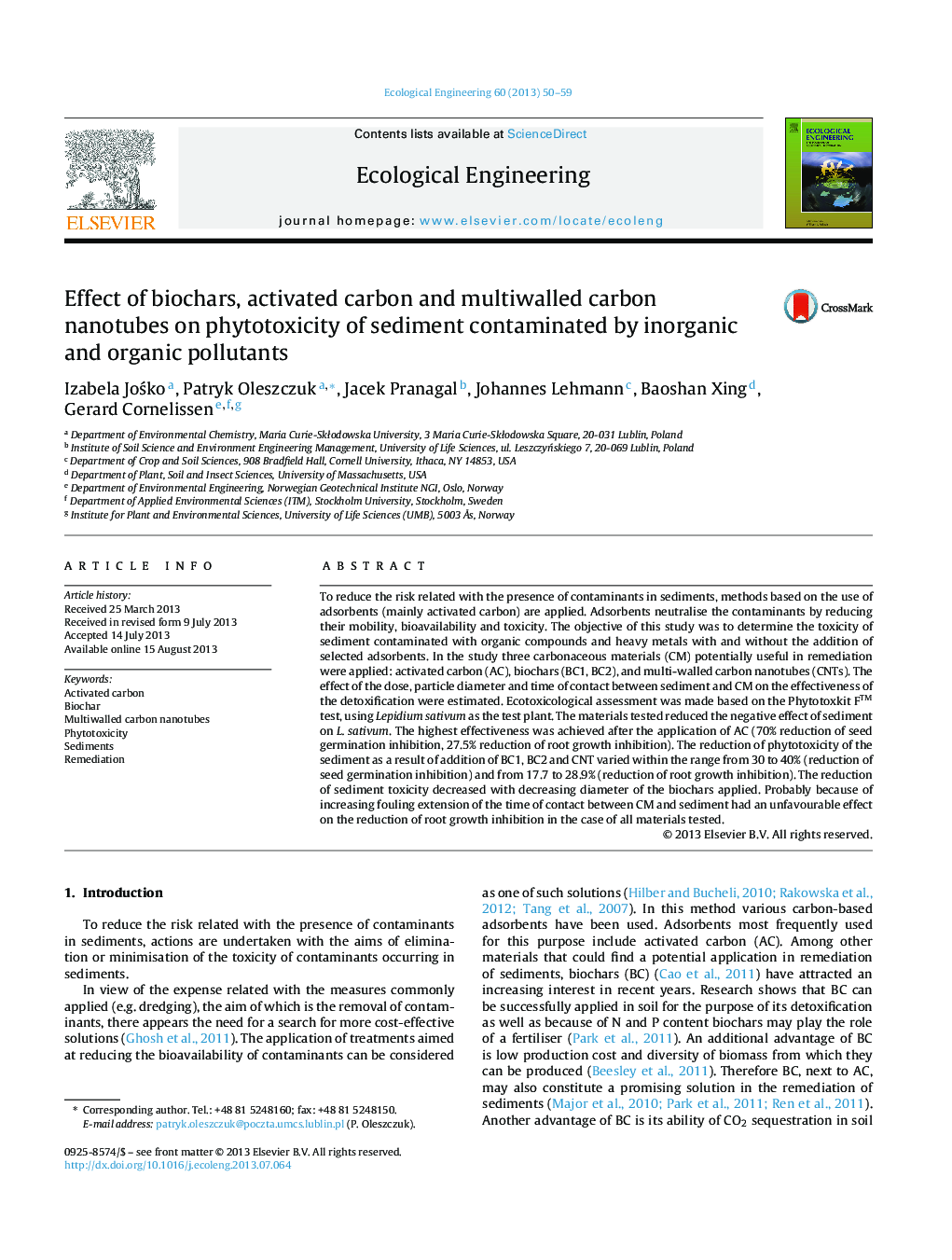| Article ID | Journal | Published Year | Pages | File Type |
|---|---|---|---|---|
| 6302346 | Ecological Engineering | 2013 | 10 Pages |
To reduce the risk related with the presence of contaminants in sediments, methods based on the use of adsorbents (mainly activated carbon) are applied. Adsorbents neutralise the contaminants by reducing their mobility, bioavailability and toxicity. The objective of this study was to determine the toxicity of sediment contaminated with organic compounds and heavy metals with and without the addition of selected adsorbents. In the study three carbonaceous materials (CM) potentially useful in remediation were applied: activated carbon (AC), biochars (BC1, BC2), and multi-walled carbon nanotubes (CNTs). The effect of the dose, particle diameter and time of contact between sediment and CM on the effectiveness of the detoxification were estimated. Ecotoxicological assessment was made based on the Phytotoxkit F⢠test, using Lepidium sativum as the test plant. The materials tested reduced the negative effect of sediment on L. sativum. The highest effectiveness was achieved after the application of AC (70% reduction of seed germination inhibition, 27.5% reduction of root growth inhibition). The reduction of phytotoxicity of the sediment as a result of addition of BC1, BC2 and CNT varied within the range from 30 to 40% (reduction of seed germination inhibition) and from 17.7 to 28.9% (reduction of root growth inhibition). The reduction of sediment toxicity decreased with decreasing diameter of the biochars applied. Probably because of increasing fouling extension of the time of contact between CM and sediment had an unfavourable effect on the reduction of root growth inhibition in the case of all materials tested.
